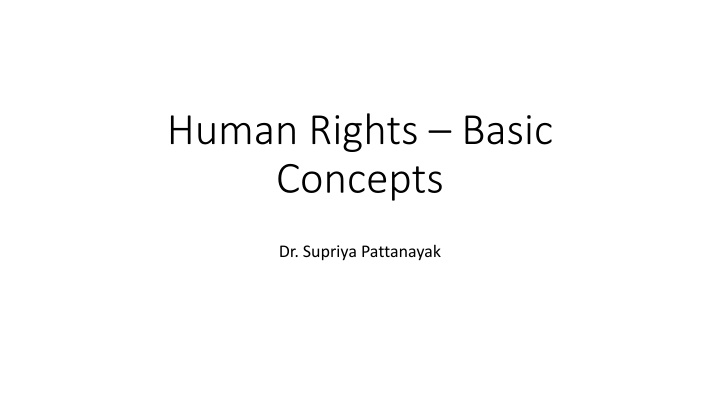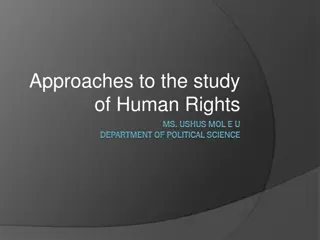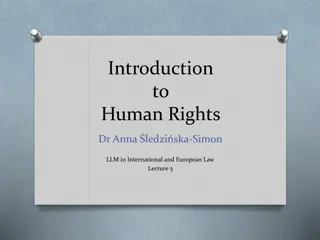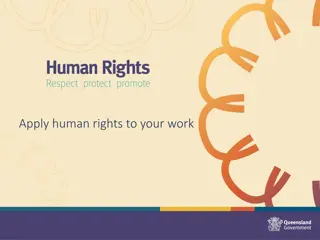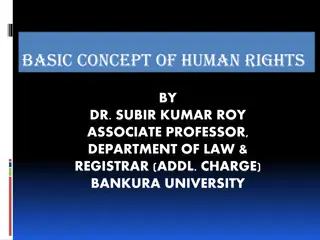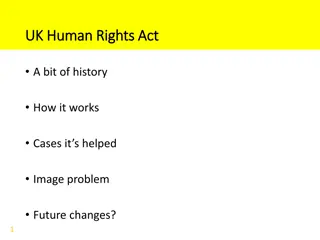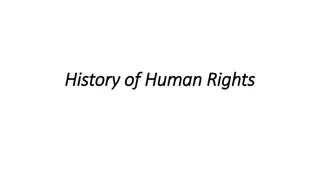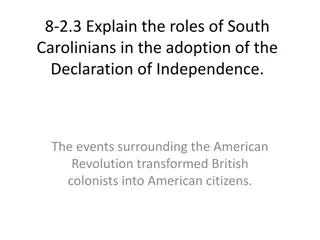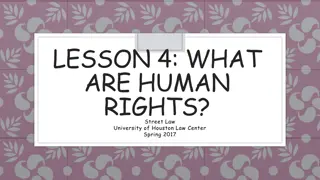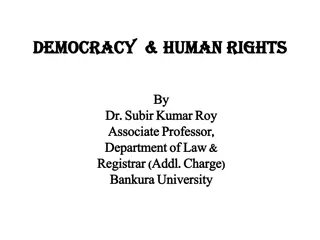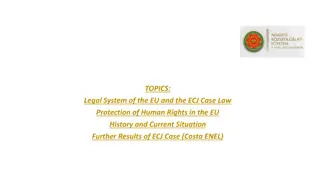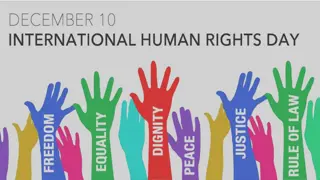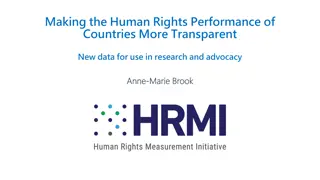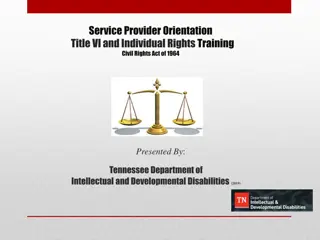Essential Human Rights Concepts and Declaration Details
Human rights are fundamental rights inherent to all individuals, promoting dignity and full development. The Universal Declaration of Human Rights outlines key rights including equality, freedom from discrimination, liberty, education, and more. These rights are crucial for a just and harmonious society.
Uploaded on Mar 07, 2025 | 0 Views
Download Presentation

Please find below an Image/Link to download the presentation.
The content on the website is provided AS IS for your information and personal use only. It may not be sold, licensed, or shared on other websites without obtaining consent from the author.If you encounter any issues during the download, it is possible that the publisher has removed the file from their server.
You are allowed to download the files provided on this website for personal or commercial use, subject to the condition that they are used lawfully. All files are the property of their respective owners.
The content on the website is provided AS IS for your information and personal use only. It may not be sold, licensed, or shared on other websites without obtaining consent from the author.
E N D
Presentation Transcript
Human Rights Basic Concepts Dr. Supriya Pattanayak
Defining Human Rights Those rights which are essential for the protection and maintenance of dignity of individuals and create conditions in which every human being can develop their personality to the fullest extent. Human rights become operative at birth. Human rights are inherent in all individuals irrespective of their caste, religion, sex and nationality. Because of their immense significance to human beings, they are also referred to as fundamental rights, basic rights, inherent rights, natural rights and birth rights.
Universal Declaration of Human Rights On December 10, 1984, the General Assembly of the United Nations adopted and proclaimed the Universal Declaration of Human Rights. Following this historic act, the Assembly called upon all member countries to publicize the text of the Declaration and to cause it to be disseminated, displayed, read and expounded principally in schools and other educational institutions, without distinction based on the political status of countries or territories . Adopted by 56 member nations and now 192 Was drafted by the UN Commission on Human Rights, chaired by the then First Lady of US, Eleanor Roosevelt
Articles 29 Articles of the Universal Declaration of Human Rights Right to Equality Right to free movement in and out of the country Freedom from Discrimination Right to asylum in other countries from persecution Right to life, liberty and personal security Right to a Nationality and the freedom to change it Freedom from Slavery Right to marriage and family Freedom from torture and degrading treatment Right to own property Right to recognition as a person before the law Freedom of Belief and Religion Right to remedy by competent Tribunal Freedom of opinion and information Freedom from arbitrary arrest Right to peaceful assembly and association Right to be considered innocent until proven guilty Right to participate in government and in free elections Freedom from interference with privacy, family, home and correspondence Right to Social security
Articles of the Universal Declaration of Human Rights Freedom of Speech Right to desirable work and to join trade unions Right to rest and leisure Right to adequate living standard Right to Education Right to participate in the cultural life of the community Right to social order that articulates this document Community Duties essential to free and full development
Two kinds of Human Rights Civil and Political Rights Civil Rights and Liberties refer to rights belonging to a person by reason of citizenship. They are those rights which relate to the protection to the right to life and personal liberty. They are essential for a person to lead a dignified life. Such rights include right to life and liberty, right to freedom from discrimination, right to equality before the law, right to privacy, freedom from torture and right to own property. Political rights refer to the rights which allow a person to participate in the government of a State. For example: right to vote, right to get elected and right to take part in the conduct of public affairs. The nature of both of these may be different but they are interrelated and it does not appear logical to differentiate them.
Economic, Social and Cultural Rights These are based fundamentally on the concept of social equality (also called freedom to ) and are related to the guarantee of minimum necessities for life. Economic rights pertain to access to resources such as land, labour, physical and financial capital that are essential for the creation, legal appropriation, and market exchange of goods and services. For eg: right to work, right to own property, right to adequate standard of living, etc. Social rights relate to living together or enjoying life in communities or organised groups. For eg: right to social security, right to social welfare, etc. Cultural rights ensures the well being of the individual and foster the preservation, enrichment and dynamic evolution of arts, manners and way of living of a group with principles of unity in diversity of expression. For eg: right to take part in the cultural life, right to enjoy the benefits of scientific progress and its applications. In the absence of these rights the existence of human being is likely to be endangered. Also called positive rights and require active intervention and not abstentions from states. Requires major commitment of resources and therefore their realization cannot be immediate as in civil and political rights.
These two sets of rights are recognised by two separate Covenants The International Covenant on Civil and Political Rights (ICCPR) and the International Covenant on Economic, Social and Cultural Rights (ICESCR) but there is close relationship between them. Civil and political rights can have no meaning unless they are accompanied by Economic, Social and Cultural Rights. Therefore both categories of rights are equally important.
Four Characteristics of Human Rights Inherent essential or intrinsic part of our lives Universal all have human rights no matter who they are or where they are Indivisible human rights have to be enjoyed by all in its full range Inalienable cannot be taken away or transferred (but can be limited when the exercise of the same is an affront to the rights of others)
